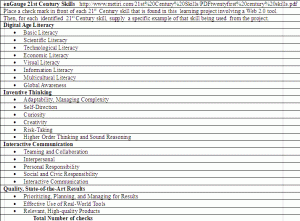I thought that we have moved beyond focusing on the technology to focusing on student academic learning. I thought that back in the 90s. However, I find evidence even today that technology still has become the true focus rather than student academic learning. Whenever I look at the rubrics for an Web 2.0 tool, I see that the vast majority of rubric items focus on the “mechanics” of the technology. They do not focus on the students’ academic learning.
My writing teachers never graded me on the mechanics of a pencil. They wanted to see if I could write something worthwhile. As I went to college, no one graded me on the mechanics of word processing; they did grade me on how I could demonstrate my content learning. Yes, I do agree that we need basic word processing skills but those technology skills must not be confused with academic learning.
What new academic skills are students learning through Web 2.0 tools? What new ways of thinking are they developing and how do they demonstrate those ways of thinking? Does each Web 2.0 tool add a different dimension of learning?
Let’s demystify Web 2.0 learning by focusing on student academic learning, not on the technology!
My new book, Successful Student Writing Through Formative Assessment, is available through Eye on Education.

My book, Formative Assessment: Responding to Your Students, is available through Eye on Education.














